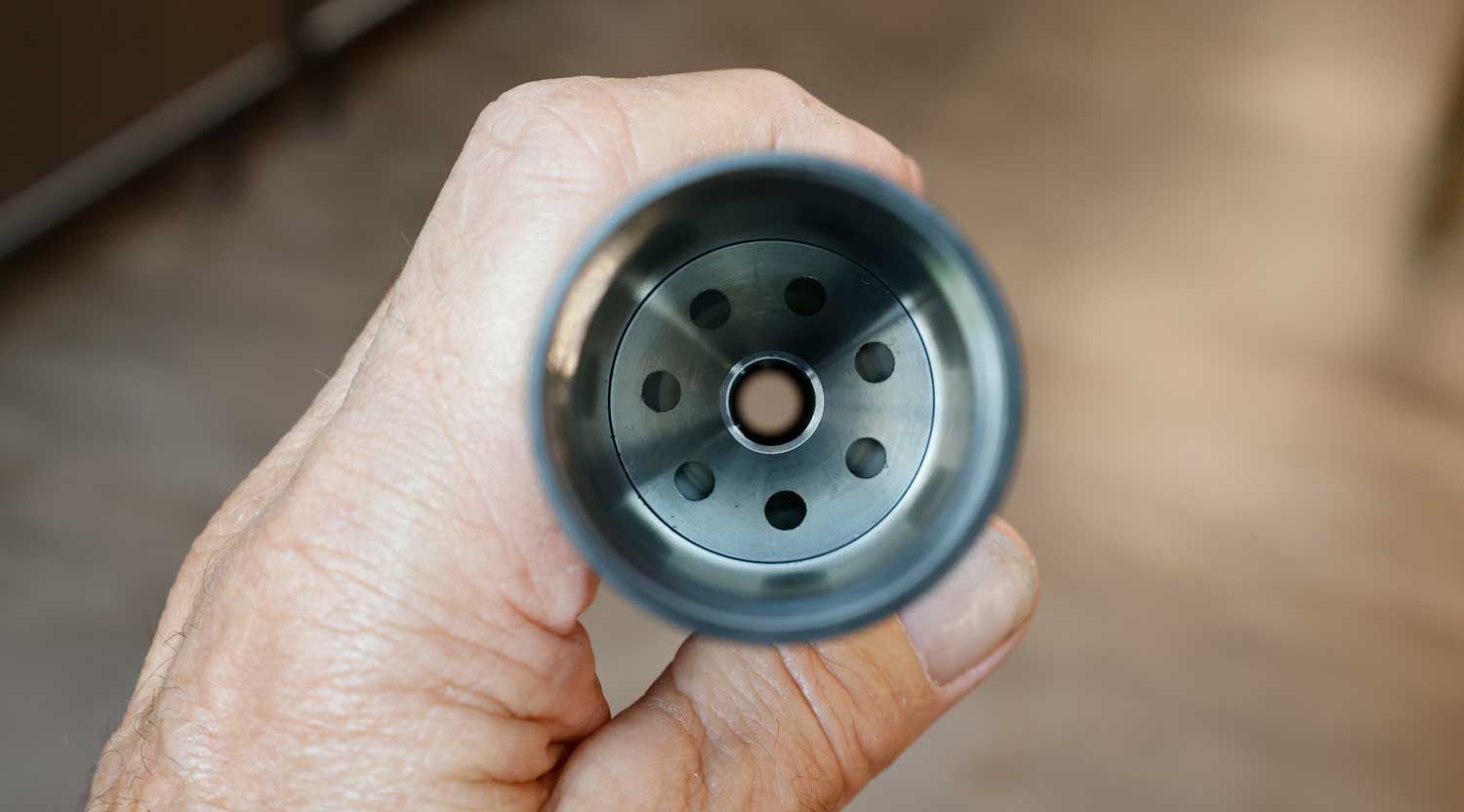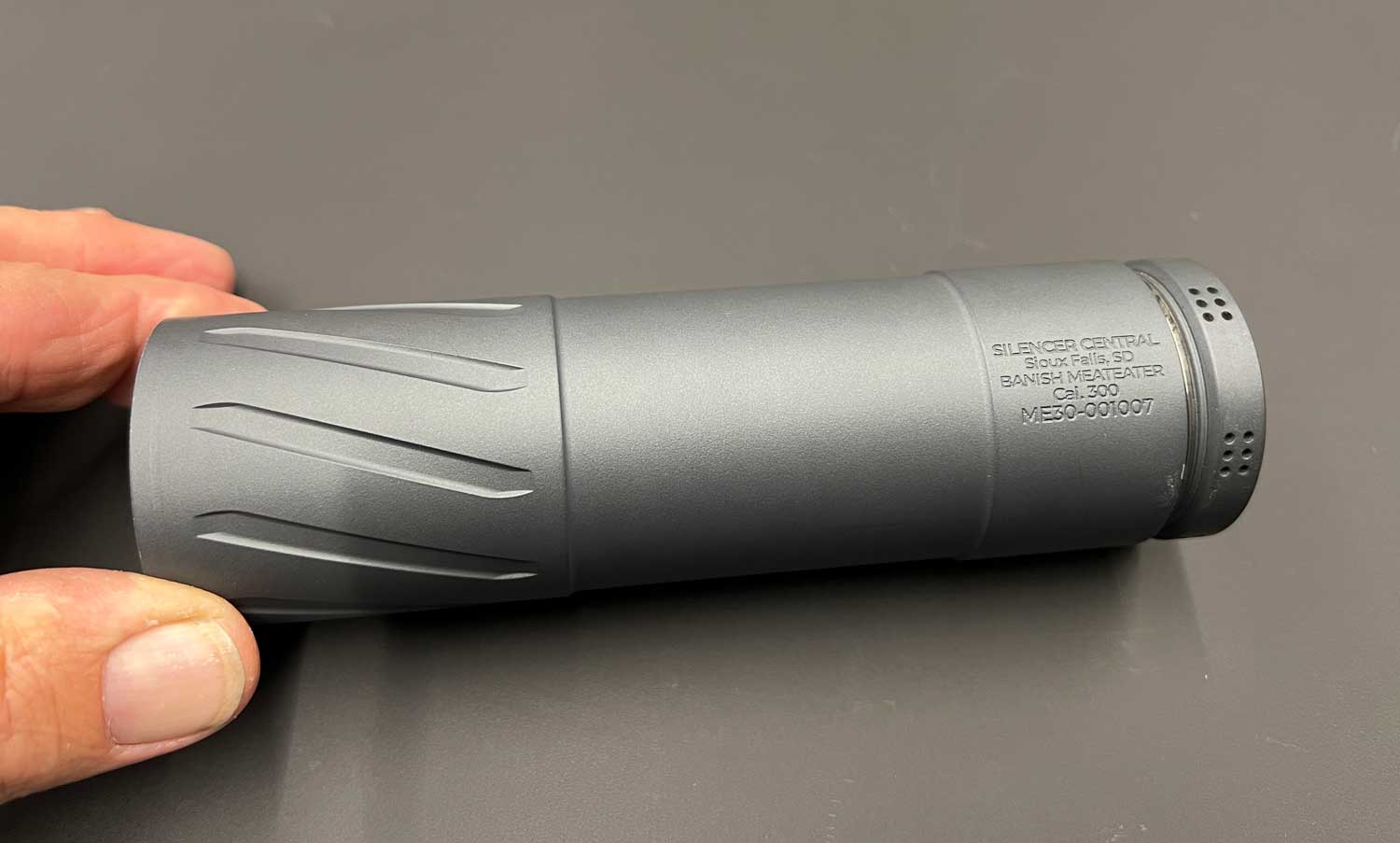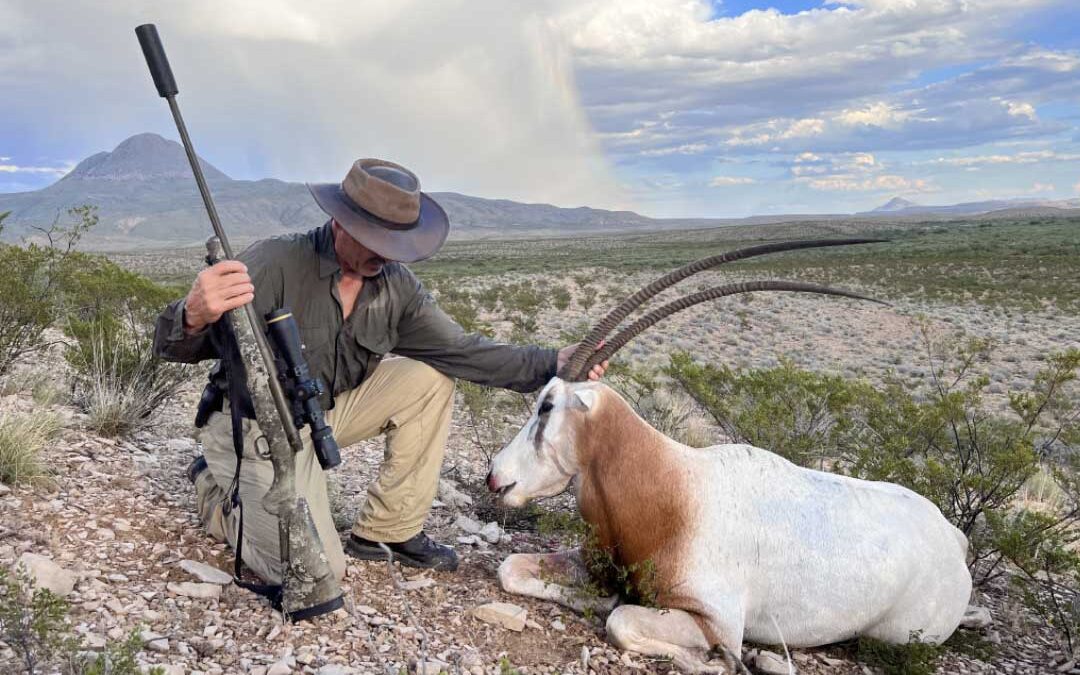Whether from the muzzle of a 416 Rigby, the tailpipe of a Harley Davidson, or the mouth of a politician, the abrupt release of a lot of hot air generates a bang. Usually a painfully loud bang.
In a historically odd turn of events, politicians have helped quiet roadways and neighborhoods by mandating mufflers on internal combustion engines. Alas, they did just the opposite for firearms. (Hiram Maxim, inventor of the car muffler, simultaneously introduced gun mufflers. With a bit of marketing flare, he labeled them silencers, a descriptor that has tainted them
ever since.)
Possessing a muffler that affixes to the muzzle of a firearm, even if you have no firearm on which to affix it, is a felony offense. The National Firearms Act of 1934 (gun control panaceas are nothing new) made citizen ownership of firearm mufflers subject to background checks, filling out an ATF Form 4 and paying a $200 tax. Pass these hurdles and when the bureaucracy finally sends you your silencer stamp, you may go to your Class 3 firearms dealer and take possession of one silencer.

Silencers reduce sound blast by cooling gases, giving them space in which to expand and reducing their velocity.
Ah, there’s that frightening word: silencer. Hollywood’s go-to prop for clandestine assassination, the nefarious device that reduces the muzzle blast of any firearm to which it is attached to less than the sound of someone spitting.
How did we come to all this? Al Capone is part of the answer. He and other crime bosses of the prohibition era inspired politicians to rein in their tools of trade: automatic rifles (Tommy guns,) short-barreled rifles and sawed off shotguns. Never mind the odd coincidence that passage of the 18th Amendment prohibiting alcohol fueled the rise in crime syndicates in the first place.
The other, lesser known, but perhaps more powerful incentive for slapping strict controls on gun mufflers, was deer poaching. Game wardens of the era were up against poachers spotlighting deer and head-shooting them with suppressed 22 rimfires. If any firearm comes close to the minimal cough of a Hollywood silenced gun, it is the 22 rimfire.
At any rate, wrangling politicians agreed to subject silencers to the $200 tax in exchange for removing handguns from similar provisions. So here we deer hunters are, no longer poaching with muffled 22s, but blasting the fragile hairs from our inner ears with unsuppressed 30-30s, 30-06s and 300 magnums. Ouch.
Relief is not on the horizon. It’s on your doorstep. Thanks in large part to inflation and Brandon Maddox, legally getting and using a firearm moderator, as Europeans call it, is inexpensive and quick. In today’s inflated dollars the $200 of 1934 is worth about $8. Applying for and receiving a tax stamp can be completed in about seven days. That’s the part Maddox fixed.

Modern suppressors add to barrel length and often increase accuracy while reducing muzzle blast and recoil.
Maddox was no gun expert, no lawyer, no silencer aficionado when he launched his quest to simplify silencer purchasing. He was just a new hunter wanting to protect his hearing and wondering why it took a year to get approved to own a simple muffler. So he investigated, met with various and multitudinous government officials, most of whom didn’t know silencer regulations from a hole in a muzzle, and straightened out the mess. Maddox questioned, clarified, sued, inspired and eventually created Silencer Central, a business that doesn’t make or sell suppressors so much as handles the ATF paperwork for customers. Thank Maddox for having the gall, persistence and smarts to simplify silencer purchasing.
But why bother in the first place? Hunters have lived without muzzle mufflers since flintlock days. Why the rush to suppressors now? Because 50-year-old hunters are discovering the misery of hearing like a 95-year-old. When you tire of asking your spouse “What?” after her every utterance, when you listen to your grandchild’s story of catching her first butterfly and don’t understand a word of it, and when you watch a wren throw back its head and open its beak and don’t near a note, you regret each muzzle blast you’ve endured.
Do you remember that pain of that first 30-06 or 12 gauge blast? Remember the ringing in your ears? Still hear it? That’s hearing damage. Excessive sound wave impulse pressures literally erode the microscopic hairs within your cochlea. Pressures that register 140 decibels (dB) or higher do this, and a 22 Long Rifle generates 140 dB. All centerfires are well above this level, most in the 160 dB range, some hitting 175 dB. These are not slightly louder. They are exponentially louder because the decibel scale is logarithmic, each number representing a ten-fold increase.
You can knock about 30 dB off the top with ear plugs or hard plastic muffs, but who likes to walk the autumn woods with ears plugged? And who has time to plug before play? A silencer screwed to the end of a barrel knocks the same 30 dB down and it’s always ready to perform. As a bonus, it reduces recoil rather significantly, too.
Ah, but who wants a fat, long, ugly can ruining the classic lines of a fine hunting rifle? Probably those of us who’ve already lost 80-percent or more of our hearing. And every younger shooter who doesn’t want to. The trend of late is to buy a rifle with a relatively short barrel, say 16 to 20 inches, with a threaded muzzle to which one can fit a discreet end cap, a muzzle brake or a suppressor. Silencer Central’s Banish Backcountry adds 5.5 inches of length and 8 ounces. Or have the end of your classic barrel threaded, screw on the silencer, and put up with the extra six inches when hunting. Remove for range work and practice while wearing ear muffs.
How They Work
Silencers reduce sound blast by cooling gases, giving them space in which to expand and reducing their velocity. It’s analogous to letting the air out of a balloon slowly through its neck rather the popping it with a pin.
The larger the volume of the can, the greater the sound reduction. Gas velocity is reduced via a system of internal baffles, cones of aluminum, steel or titanium. The bullet passes unhindered through concentric holes in the stack of baffles while the gases are angled away. The geometry of surfaces can get quite elaborate, but the results are simple. Sound reduction without disrupting bullet stability. Most rifles shoot a bit more accurately, some dramatically more accurately, with a suppressor.
One silencer can be used on any compatibly threaded rifle barrel of the same or smaller caliber. Some mufflers even use adapters to fit different thread sizes, making them impressively versatile. The gap between a smaller caliber bullet and a larger caliber can opening does compromise some of the sound reduction, but it’s minimal.

